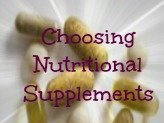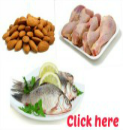Health Benefits of Vitamin C
Vitamin C which is also known as ascorbic acid, is a water-soluble nutrient found in some foods especially fruits and vegetables.
This vitamin has a wide variety of uses in the body; it helps slow down or prevent cell damage; it maintains healthy body tissues and the immune system. This vitamin also helps our bodies absorb iron from plant foods.
Vitamin-C is easily destroyed during preparation, cooking, or storage. To retain this vitamin in foods, you can eat raw fruits and vegetables as soon as possible after buying them. Cut vegetables just before eating or cooking. Cook the vegetables shortly in as little water as possible so as to retain their nutrient value.
Eating a variety of foods that contain ascorbic acid is the best way to get an adequate amount each day rather than supplements.
Healthy individuals who eat a balanced diet rarely need supplements. However, vitamin supplements are preferable whenever vegetables and fruits sources are not available.
You should not consume more than 2000 mg of vitamin C per day. Although excess ascorbic acid is mostly eliminated in the urine, high doses can cause headaches, frequent urination, diarrhea, and nausea.
People with a history of kidney stones should avoid high levels of this ascorbic acid.
Foods Sources of Vitamin C
Ascorbic acid is found in many fruits and vegetables. Citrus fruits and juices are the richest sources of ascorbic acid.
Other fruits that contain ascorbic acid include: mangoes, papaya, tomatoes, water melon, kiwi fruits, honeydew melons, cherries, cantaloupe, and tangelo.
Vegetables that provide this vitamin are: cabbage, peas, broccoli, red and green peppers, Brussels sprouts, kale, bean sprouts, mustard greens, cauliflower and potatoes.
These vegetables may be more important sources of vitamin-C than fruits, given that the vegetable supply often extends for longer periods during the year than does the fruit supply.
Limitations
to Vitamin C Supply
Ascorbic acid is very labile, and the loss of this vitamin on boiling milk provides one remarkable example of a cause of childhood scurvy.
Vitamin-C content in food is strongly influenced by season, transport to market, length of time on the shelf and in storage, cooking practices, and the chlorination of the water used in cooking.
It is important to realize that the amount of ascorbic acid in a food is usually not the major determinant of a food’s importance for supply, but rather regularity of intake.
For example, in countries where the potato is an important staple food and refrigeration facilities are limited, seasonal variations in plasma ascorbate are due to the considerable deterioration in the potato’s vitamin-C content during storage; the content can decrease from 30 to 8mg/100g over 8-9 months.
An extensive research has been made on the losses of ascorbic acid during the packaging, storage, and cooking of blended foods.
Data from a United States international development programme show that vitamin-C losses from packaging and storage in polythene bags of such relief foods are much less significant than the 52–82% losses attributable to conventional cooking procedures.
Vitamin
C Deficiency
Vitamin-C is present in many foods that we eat and hence deficiency is rare.
However, scurvy is the disease caused by vitamin-C deficiency. This would be the first nutritional disease to afflict people having only grain and/or beans and lacking the know-how needed to sprout them and produce enough of ascorbic acid.
Within only 4 to 6 weeks of a deficiency of this vitamin, the first symptom of scurvy would appear - swollen and bleeding gums. Weakness, then large bruises, hemorrhages, and wounds that would not heal would follow this. Finally, death from hemorrhages and heart failure would result.
Always monitor your diet to ensure that you get enough ascorbic acid so that you avoid the risk of having a deficiency of the same.
Vitamin Related Articles








New! Comments
Have your say about what you just read! Leave me a comment in the box below.